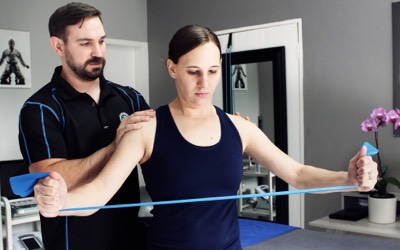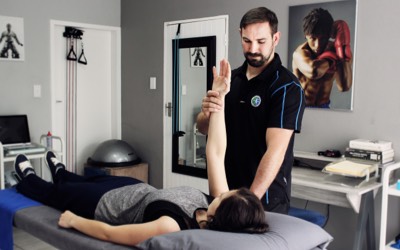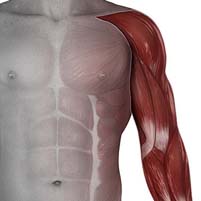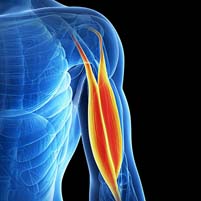Shoulder injuries are a mixture of damage to muscles, ligaments, joints, bursa, labrum or nerves around your shoulder. Here’s a few shoulder conditions our practitioners are great at treating. There are different types of structures around your shoulder, each one with it’s own set of signs and symptoms. First we must establish the extent of the damage to the tissue, then we know exactly what we’re dealing with. Most shoulder injuries have more than one problem at the same time, the question is which one takes priority. Spreading pain over your shoulder into your arm or back is more concerning than sharp stinging pain at a specific point. When nerves gets involved resolving the problem may take much longer.
Our years of practice has shown us that most shoulder injuries are quite an easy fix, but the tendency of people to leave it for too long causes a knock-on effect breaking one system after another. Months down the line, and it just gets worse. Understanding the scope of the problem directly impacts recovery and healing time, the faster you know what you’re dealing with, the faster you’ll be able to control the situation. Rather get a accurate diagnosis sooner rather than later.
Here’s our catalogue of articles describing how our practitioners approach shoulder injuries. From frozen shoulder to torn biceps muscles. Keep in mind that most shoulder conditions involves a combination of damage to different structures at the same time. For example, A fracture is always has some form of ligament sprains and muscle tears that accompanies it, apart from the obvious crack in the bone. Neglecting these ‘less obvious’ tissue damage usually causes delayed healing or even poor recovery. After the bone is fused, your muscles must move your arm, so we must keep you active within certain boundaries to guarantee they’re up for it. When diagnosing shoulder pain, we determine the hierarchy of priority and focus our treatment on that.
Shoulder pain is the feeling of discomfort in the area of your shoulder and upper arm. You may feel constant pain or feel pain only when moving the shoulder. In this article, we look at the different types of structures in the shoulder, how injury/damage to them causes pain and our treatment of shoulder pain. We find that neck pain can also be present with patients suffering from shoulder pain.
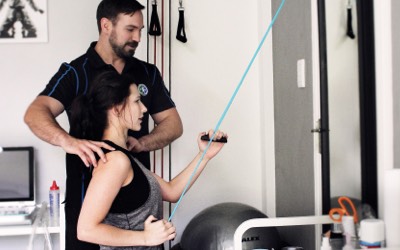
The shoulder joint is the most mobile joint and because of how freely it can move. It is also the least stable joint. Shoulder joint pain can originate from any of the structures inside and around your shoulder joint – muscles, tendons, bones and ligaments. Read this article to know more about how this type of injury occurs and the different phases of physiotherapy treatments.
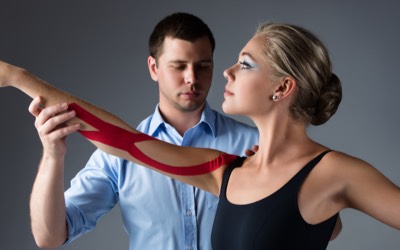
The most commonly known muscle of the body. Found in the front of the upper arm, originating from the shoulder and attaching just below the elbow joint. It often starts to ache once you lift an excessively heavy object. Playing an instrument for an extended amount of time (for example violin) can also strain your biceps muscle. Read this article to gain insight into why we shouldn’t take this muscle for granted.
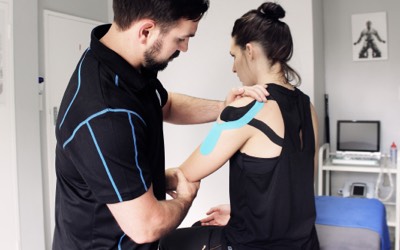
The Rotator Cuff muscles are the four most important muscles required for the shoulder joint to function. Not only do the Rotator Cuff muscles provide movement of the shoulder and arm but they also stabilize the whole shoulder joint. Pain when sleeping (laying on the shoulder) and movements happening over-head (e.g. combing your hair) are the first signs of an injury to one of these Rotator Cuff muscles.
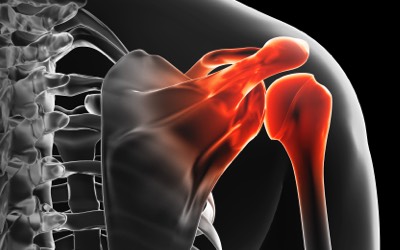
It is a common to dislocate a shoulder joint in a fall – often felt and described as the ‘popping’ out of the shoulder joint. Up to 90% of shoulder joints dislocate to the front and can cause a bulge in the front part of the shoulder. This injury can repeated itself if not properly treated the first time. Read our article covering the types, symptoms and diagnosis of dislocated shoulder joints.
Get the help you really need
Medical professionals that care about you
An impingement in your shoulder is basically when the tendons get “pinched” on their way from your shoulder blade to your upper arm. The resulting friction and strain on your rotator cuff causes a tendinitis. Rotator cuff symptoms or shoulder pain usually starts with one event and after that the pain gradually becomes more intense.
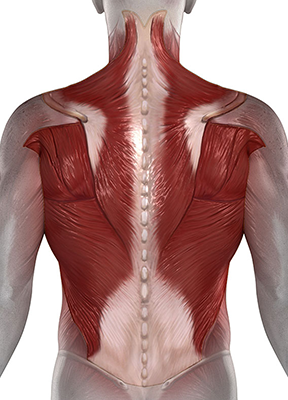
If lifting up your arm sideways causes you pain you could impinge the tendon of your rotator cuff. Supraspinatus tendon impingement causes pain with small movements, like changing gears in the car and getting dressed. Not to mention lifting and carrying groceries. You may even struggle to sleep on your shoulder.
A Bicep tendonitis symptoms affect your ability to bend or straighten your elbow. Lifting groceries, shifting gears and reaching behind your back can be immensely painful, not to mention any type of shoulder exercise.
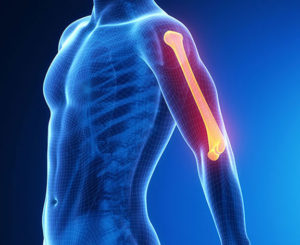
Shoulder stiffness is normal after an injury, but a “Frozen shoulder” is an abnormal, excessive reaction by your immune system to repair tissue and overcorrects. this causes pain and limited movement that gets progressively worse as your shoulder “freezes”. There’s a lot to slow the process down and the faster it’s caught, the better it’s managed.
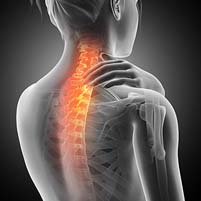
Have you ever felt a sharp pinching pain in your shoulder that makes your whole arm feel weak? Pain that spreads around the front and side of your shoulder and down your upper arm, making it hard for you to do the easiest things like putting on a jacket. Sleeping on your side is simply too sore. If you feel any of these, you could have shoulder impingement syndrome. Also known as subacromial impingement or rotator cuff impingement.
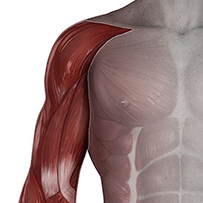
Your glenoid is covered by an O-ring seal within which your upper arm can move. SLAP is a tear in this ‘seal’ between your shoulder blade and upper arm. A SLAP shoulder lesion causes poorly localized symptoms like clicking or grinding of the joint on movement, pain when lying on the injured side and loss of strength and endurance, especially with overhead and behind the back activities.
Get to the root cause of your problem
Our team of experts guide you to heal
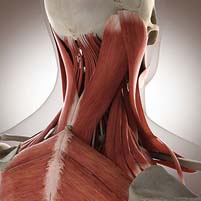
There are countless different structures in your neck and shoulder that work in unison to provide full active and strong movement in both areas. An issue in the neck may predispose you to shoulder problems and vice versa. Muscles, nerves and tendons run across both sites that leads to pain spreading from the one to the other.

Stress is a loaded topic. Most of us are familiar with the emotional effects of stress, but did you know that you can experience physical stress too? Whether it’s conscious or unconscious in situation you can or cannot control – your body reacts to your environment. Your shoulders are one of sites where nerves become agitated and your threshold of coping drops. Our stress seems to accumulate in our neck and shoulders, and here’s why.
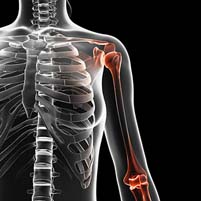
Do you wake up in the morning with a stiff and painful shoulder that takes a while to “warm-up”? This means there is damage to the cartilage inside your joint. It progressively gets worse as more layers are affected and your pain starts to limit you so much that you can’t do the most basic things.

SKILLED EXPERIENCED MEDICAL PROFESSIONALS
“If you’re concerned, we diagnose your problem and treat it
Let us check it and determine the damage”
If you’re suffering from pain after trauma or even surgery, you are at the right place. We treat all kinds of injury and damage to tissues like muscle, joint, tendon, ligament and nerves. Sign up for treatment today.


